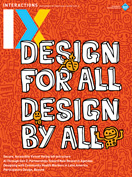Authors:
Neven ElSayed, Kim Marriott, Ross T. Smith, Bruce H. Thomas
Augmented reality (AR) is the technology of enriching the physical world with additional information [1], converting users' physical environments into their user interfaces. This goal is becoming more attainable with the growth of data production and streaming technology, especially with the rapid improvement of AR displays. Insights → Situated analytics (SA) aims to enhance information understanding with an in situ, analytical, interactive user interface. → The presented illustration shows the potential use and benefits of SA, highlighting the strength of using data storage, processing, and analysis for making decisions. → The contextual and situational awareness of SA interaction…
You must be a member of SIGCHI, a subscriber to ACM's Digital Library, or an interactions subscriber to read the full text of this article.
GET ACCESS
Join ACM SIGCHIIn addition to all of the professional benefits of being a SIGCHI member, members get full access to interactions online content and receive the print version of the magazine bimonthly.
Subscribe to the ACM Digital Library
Get access to all interactions content online and the entire archive of ACM publications dating back to 1954. (Please check with your institution to see if it already has a subscription.)
Subscribe to interactions
Get full access to interactions online content and receive the print version of the magazine bimonthly.






